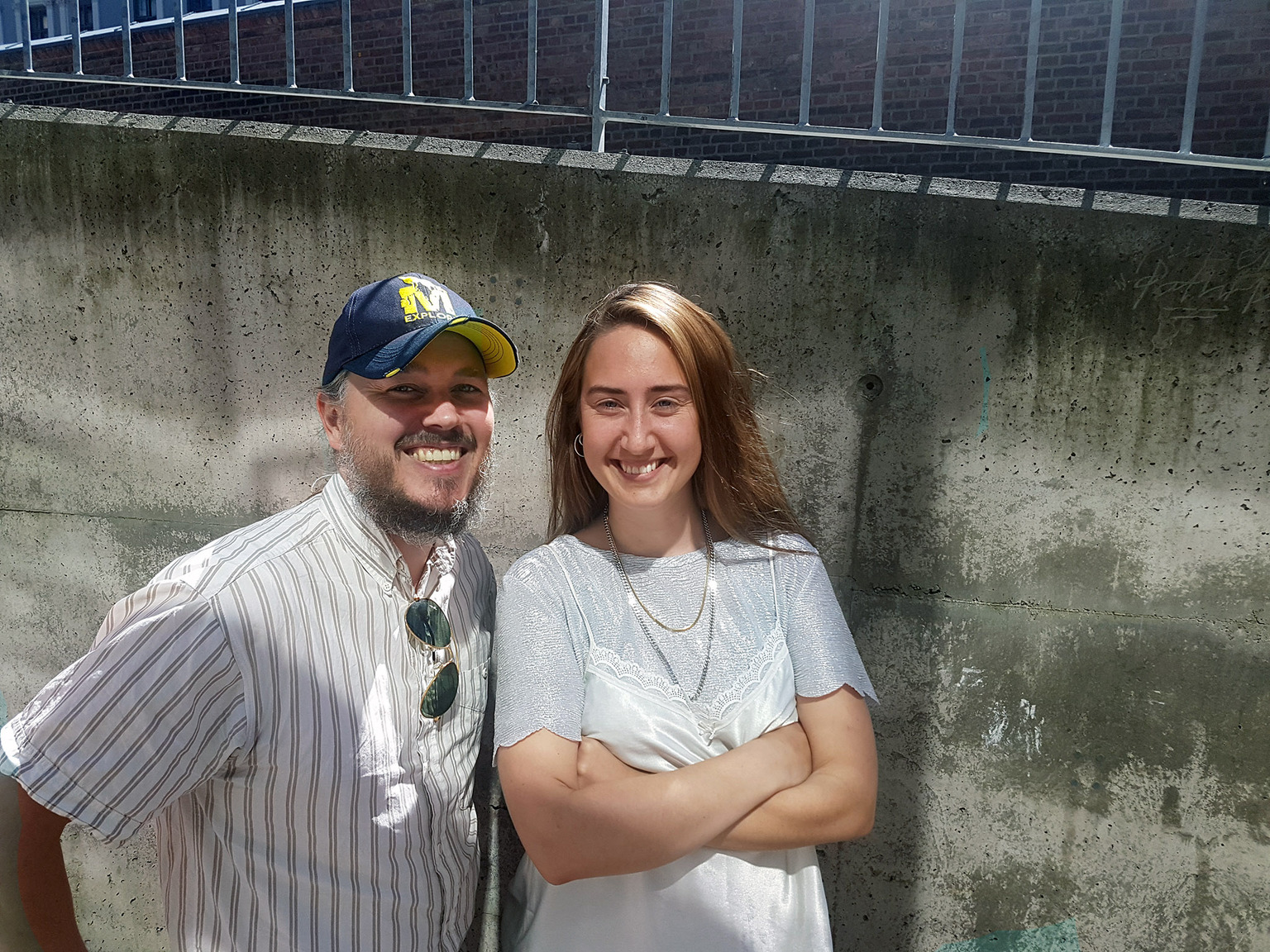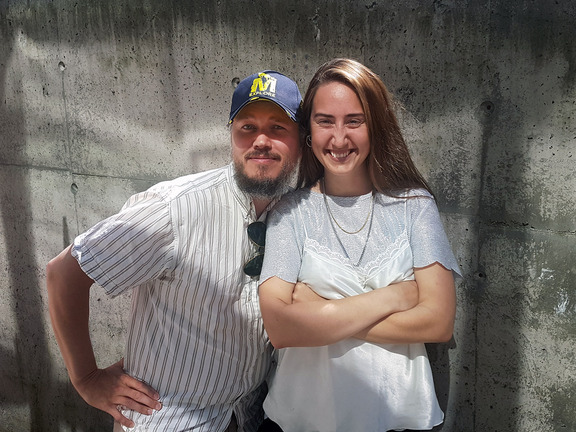
The tiny office of the powers that be
Getting involved in student politics at the Academy provides insight into how the school is organised, access to the corridors of power and a tiny office right by the cafeteria.
“I would strongly recommend students to get involved,” says Alva Brosten, a former Student Council representative for the Design department. “It’s a good idea for artists to get some experience of how the administrative side of things works as well.”
Along with the leader of the Student Council, Hans Christian Lichtenberg Nielsen, and council representatives from the other departments, Brosten has helped shape student democracy at the Academy. Nielsen and Brosten have now both stepped aside, with Ylva Kemi serving as the new council leader.
Gathering point
“The Student Council is a unique platform that allows students from the various departments to come together,” says Brosten.
Members of the Student Council or the Academy Board become familiar with the school and it’s professional and administrative aspects in a unique way. Such participation lets members make contacts across the various fields with both students and professors.
“Taking part in student democracy is like training to be artist in general – you get frustrated,” Nielsen notes. “But despite the frustration you still get a lot out of it. If you’re smart, you’ll be social, and then you’ll join the councils. The world of art, the world of design, they’re both based on having a network.”
The Student Council office
To find the Student Council office you have to go down the stairs to the left of the main entrance and further down the corridor towards the Prosjekttorget area. The office lies tucked away to the left towards the lavatory.
One of Nielsen’s priorities as council leader was to open the doors and make people realise that the Student Council exists.
In order to raise awareness about the council, Nielsen and his fellow representatives began to organise exhibitions at the office. In addition, some of the council’s funds were earmarked for student projects that benefitted the community. It proved such an enormous success that they ended up using all the council’s discretionary funds to support this initiative.
“As the leader of the Student Council, I’ve learnt that you have to be relaxed and accept that people often don’t show up,” Nielsen says. “And if you do want people to show up, you have to serve some food.”
Proximity to the administration
Brosten and Nielsen also serve as student representatives on the Academy Board and on the Learning Environment Committee (LMU), which has given them closer access to the administration and the professional staff.
“Above all, I think it’s interesting to see the behind-the-scenes work and observe how the teachers and staff talk amongst themselves,” Brosten says. “The Academy disposes of large sums of money. People just say things like, ‘Can’t they just fix this or that?’ But behind everything lies a major process. The things we learn in the Student Council and as student representatives on the board should really be common knowledge for every student.”
According to Nielsen, however, such knowledge is in fact far from common. “When I spoke with a few other students and mentioned the Academy’s director, their response was to ask, ‘We have a director at the Academy?’ I replied that while the Academy’s rector oversees art-related matters, the director is in charge of the rest. There are many students who have no idea about these things.”
Experiences from student democracy
Brosten and Nielsen have a great deal of confidence in the board, and their experience is that they were treated as full members and not just as students. At the same time, there is a great difference between student democracy and the Academy’s highest authority.
“The Academy Board is entirely different from the Student Council,” says Brosten. “It is very bureaucratic and more complex. If you lack the necessary experience, you may well feel overwhelmed by the arcane terminology and a sense of confusion. But it all works out in the end.”
“I think that if you get some experience with the administrative side of art, you will understand more about how things work. And then it might not be as daunting to apply for grants and stipends, because you know where to go and what sort of language to use.”
According to Nielsen, following the language and the procedures is like a social experiment. The work offers experiences that will come well in hand in their further careers as artists.
“If you only focus on your own work, it’s easy to get into a rut,” he says. “In order to get off the beaten track you need some kind of displacement, and the experiences you would rather be without often lead to the strongest such displacements. And in hindsight you realise you’ve learnt a lot.”
Student democracy at the Academy
• The Student Council is the direct mediator between the students and school management.
• The Student Council comprises the leaders and deputy leaders of each of the four student committees. The students themselves choose who sits on the council.
• The students are also represented on the Academy Board. The student representatives and their deputies are chosen by the students each autumn semester after several nomination and election rounds. Relevant information is announced beforehand.
• Students are also represented in the following committees at the Academy: the Learning Environment Committee (LMU), the Recommendation Committee, the Election Committee and the Nomination Committee.
• Students are represented in the following external committees: SiO (the welfare organisation for students in Oslo and Akershus), the National Union of Students in Norway (Norsk studentorganisasjon, NSO) and the Welfare Council (Velferdstinget, VT).
